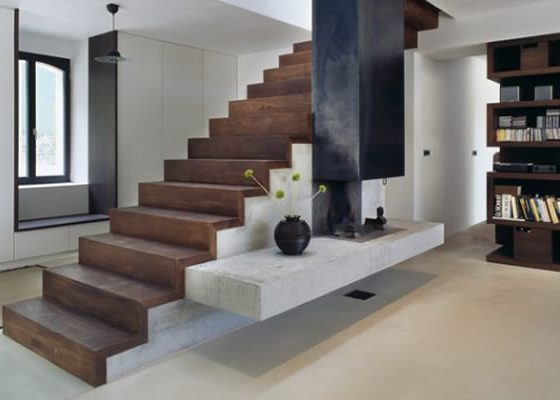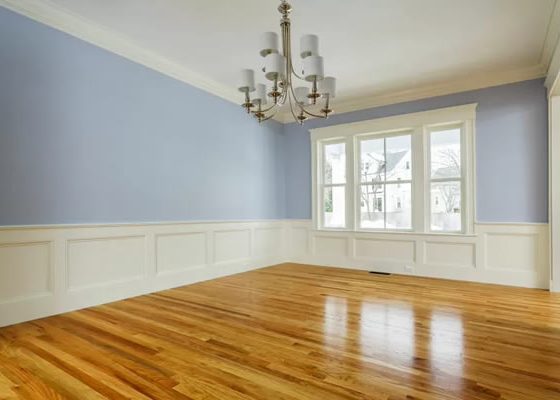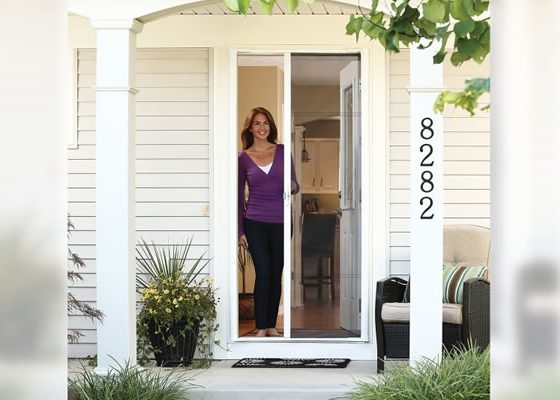Learning how to buy carpet wisely only takes a few minutes. Once you’re armed with a few tips about the different carpet characteristics, you can make an informed decision. Consider your lifestyle and the demands of daily living when choosing the type of carpet you need.
Synthetic Carpet Fibers
Synthetic carpet fibers are manmade. Synthetic carpets are the most popular and common type sold. Generally, they are much more affordable than a natural fiber carpet.
Acrylic
Acrylic carpet looks like wool and is the favorite choice for commercial carpets and homes with active families.
- Thanks to its natural soil resistance, acrylic is easy to clean.
- It’s a great carpet for active families and high traffic.
Nylon
Nylon carpet fiber is non-allergenic and its strong fiber holds up under heavy foot traffic.
- Nylon doesn’t require a lot of care and is easy to clean.
- It works well for mildew and allergy sufferers.
- It is easy to dye to give you a vibrant color palette.
- Nylon is a good choice if you have a mildew problem in your home, since it’s naturally resistant to mildew.
- If you have an active family, nylon will hold up because it’s durable.
- Nylon carpet is dirt and soil resistant.
- It can fade in direct sunlight, so consider the natural light in any rooms where you plan to use it.
- If you have a lot of direct sunlight hitting your floors, then you should go with a carpet fiber that won’t fade, such as an acrylic carpet.
Triexta
A newer synthetic carpet fiber, Triexta is very durable.
- Triexta is especially resistant to stains.
- The durability of Triexta and its resistance to stains make it a popular choice for active households.
- Families with pets may find this fiber’s resistance to stains makes it an ideal carpet choice.
Olefin
Olefin (polypropylene) is the original outdoor carpet fiber that was created to address the typical problems of mildew and moisture found in basements. During the late 1960s, Olefin carpets were popular choices for the ever popular basement rec rooms.
- Olefin is formidable against water damage and stains.
- It has become the wool alternative due to its wool-like appearance and colorfast properties.
- Just like wool, Olefin can fade if constantly exposed to direct sunlight.
- Olefin is a great fiber for loop carpets.
Polyester
Polyester carpeting is stain resistant, easy to clean, non-allergenic, and less expensive than wool and nylon.
- It isn’t as tough as nylon.
- Manufacturers can dye polyester in a large range of colors and it comes in a nice selection of textures.
- It is resistant to mildew, moisture, and moths.
- Some polyesters may fade in direct sunlight, so check the fade properties of any polyester carpet you consider.
- Polyester isn’t very resilient and will compact under foot traffic, causing it to wear and the fiber yarns to breakdown.
- It is a good choice for bedrooms and a cost-effective carpet for these low traffic rooms.
Natural Carpet Fibers
Rugs are often made of various natural fibers, such as sisal, seagrass, or jute. However, these types of carpets are much less common than wool, which is a popular natural carpet fiber.
Wool
When it comes to carpet, wool is the most common type of natural fiber used. Wool carpet has an elegant look for your home.
- Wool is a prized fiber for its durability and color saturation.
- It has the highest price tag for carpet.
- You can often find a carpet with blended fibers, such as synthetic fibers and wool. This is often marketed as a wool blend carpet.
While wool is highly durable, it can pose issues for certain situations or rooms.
- Wool absorbs moisture that can lead to mold and mildew problems, so it’s not ideal for a basement or another damp area.
- Direct sunlight will cause color fading.
- The natural shedding of wool is off-putting for many customers.
- Wool carpet, just like wool clothing, is an easy target for moths.
Wool carpeting is ideal for anyone wishing a natural fiber carpet. However, if you live in an area with high humidity or heavy rainfall, you won’t enjoy wool carpeting.
Carpet Style Choices
Once you understand the different properties of carpet fibers, you can determine the one best for your lifestyle. The next choice you’ll need to make is the carpet style.
Loop Carpet
Unlike a pile carpet, the loops of a loop carpet aren’t cut. They are consistent and the same size. Loops allow the carpet face to be tight and smooth. The type of fiber and tightness of the loop construction determines the price. Fibers used for uncut loop carpets include nylon, polyester, olefin, wool, and others.
- Loop carpet is used in many commercial buildings and high-traffic areas of homes.
- The tight loop construction makes it resistant to dirt and stains by preventing penetration.
- You can find a wide range of quality for tight loop carpets.
Berber Carpet
Berber carpet is a popular loop pile. Unlike other loop piles, it has large and small alternate tufts. Berber carpets feature a combination of loose and tight weave.
- Berber carpets can be a hazard since high heels can get caught in the loops.
- This carpet style can be quite dangerous to use on stairs.
- Pets, especially cats, can get their claws caught in the loops, and dogs can snag their toenails in the loops.
- If you use a cane or walker, you should avoid this and any loop type of carpet.
The loose weave in a Berber carpet can be problematic, as well. A loosely woven loop can be discovered when you bend the carpet sample (back to back). If you can easily place your fingertip between the loops or can see and touch the backing, then the loop is loosely woven.
- You don’t want to use a loosely woven loop weave for a high-traffic area.
- This type of carpet won’t wear well.
- You can use this type of carpeting in a bedroom or areas that are used infrequently.
- Avoid it if you have pets, or if you use a cane or walker.
Cut and Loop
A carpet that combines cut pile and loop pile, cut and loop is used to create patterned and sculpted carpets. This type of uneven pile often features different colors for a visual effect.
- Use it in heavy traffic areas.
- The cut and loop carpet serves to hide dirt, footprints, and wear.
- This is a good choice for main foot traffic areas, such as a game room, children’s playroom, family room, hall, or stairs.
- This irregular texture can potentially cause tripping for anyone using a cane or walker.
- Pet claws or toenails may get caught in the loops.
Texture Carpet Pile
A texture pile is created by tightly twisted yarns but has a soft nap finish. The texture is often highlighted by using two-toned yarns. The yarns are cut unevenly to give the weave greater durability and soil resistance.
- Use texture carpet pile for family rooms and game rooms.
- This carpet is extremely durable.
- Most texture carpets are tightly woven. If you are considering on that is loosely woven with an uneven texture, you should avoid purchasing if you have pets, since pet claws or toenails may get snagged in the carpet.
- Anyone using a cane or walker may find this carpet style a tripping hazard.
Frieze
Frieze is a short, tightly twisted yarn that produces a resilient pile. The overall look is a curly pile.
- Frieze carpet works in high-traffic areas.
- A frieze carpet pile is a great choice for halls, stairs, family rooms, and any area where there is a lot of activity.
- This carpet could interfere with the use of a cane, walker, or wheelchair.
Plush
A plush pile carpet features densely-packed strands of yarn that create a soft and plush surface. This pile is considered highly luxurious; it is a formal carpet style. The beauty of this pile is the velvet appearance.
- The carpet pile leaves footprints and trails from a vacuum cleaner.
- It works well in formal rooms and bedrooms.
- If you want a rich and luxurious carpet, a plush pile carpet will give you that ambient décor.
- This carpet is a great choice for a dining room, bedroom, living room, or a formal home design.
- This is a good carpet style for anyone using a cane or walker.
- Pets will have no snagging issues with this carpet.
Shag
If your home theme is retro, you need a shag carpet. Revived for modern use, the long yarn strands of a shag carpet create a deep pile. The overall look is shaggy, hence the name.
- Shag carpet works well for a modern home décor.
- It is a high maintenance carpet choice.
- The density and shagginess of the carpet traps dirt easily, although it also hides dirt.
- This is a fun carpet for a city, retro, or modern themed room or home.
- This type of carpet can be a hazard to pets and anyone using a cane, walker, or wheelchair.
Tips for How to Buy Carpet
When considering what carpet to put where, these tips can help inform your decision.
Consider How and Where the Carpet Will Be Used
When shopping for carpeting, consider the purpose of the room.
- What activities take place there?
- Is there a lot of moving in and out of the room?
- Do kids play in the room and have lots of spills?
- Do you have pets?
- Does any member of your home or someone who is a frequent guest in your home use a cane or wheelchair?
Use Cheaper Carpets in Low Traffic Rooms
There is a significant difference in the foot traffic of a bedroom and a hallway or staircase. You can safely choose a cheaper carpet for low traffic rooms, such as bedrooms. Hallways and staircases will receive the most wear and tear, so you want to sink your dollars into these high-traffic areas with a high-quality carpet that will last a long time.
Beware Carpets With Blown Yarns
You cannot gauge the quality of a carpet simply by the surface look. Some carpets may look full and thick, but in reality, they aren’t. This can be caused by what’s known as blown yarn.
The blown yarn carpet is usually inexpensive, but it has a great full-pile look. This is because the twist in the yarn strands has been blown out with a burst of hot air during manufacturing to give the carpet the look of a full thick pile. Compare it to a more expensive carpet to see the difference in tight twisted yarns and fluffy full yarns.
- Blown yarn carpets won’t hold up to foot traffic.
- If you have a blown yarn carpet installed within a few months, the carpet will begin to have a packed look. That’s because the yarn fiber isn’t resilient under foot traffic, since it has no real form, only air. It is literally unable to bounce back.
- You can usually get by with a blown yarn in a bedroom. For example, a guest bedroom might be an ideal room for a blown yarn carpet since it doesn’t receive constant traffic moving in and out of it.
- Other bedrooms may be a good candidate for a blown yarn as well.
- Ultimately, you will need to replace a blown yarn carpet much sooner than other carpets.
Choose the Right Carpet Padding
The pad you use underneath the carpet can lengthen or shorten the life of the carpet.
- The Carpet and Rug Institute (CRI) recommends a thicker pad to cushion bedroom, dining rooms and other low traffic areas.
- High-traffic areas, like a living room, hallway, stairs, and other areas require a firmer and thinner pad to support the carpet and prolong the life of the carpet.
- The density of the pad is important, since the higher the density, the firmer the pad will be.
- A general rule for carpet pads for residential installations is a maximum of 7/16″ thickness with a minimum of ¼” with six pounds per cubic feet density.
- For low profile carpets, such as Berber, the institute recommends a pad that’s no more than 3/8″ thick with 8 pounds density.
Easiest Carpets to Clean
Some fiber and weave make for easier cleaning.
- Nylon and polyester are two of the easiest carpet fibers to clean.
- Wool carpet is the most difficult.
- A Berber carpet is very easy to clean since the loop construction prevents spills from getting deep into the fibers.
- Spills on a cut pile carpet, such as a plush carpet, will filter down to the back of the carpeting, making it more difficult to remove.
- Many carpets are treated with Scotchgard or another stain inhibitor to be stain resistant so spill clean up is easier.
- Clean up all spills and stains immediately.
Discover the Best Carpet for You
There are many factors to consider when you decide to buy carpet for your home. Once you understand the types of fibers, carpet styles, and pads, you can make an informed decision about the best carpet for your home.














